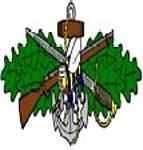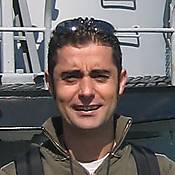You are viewing the archived version of the site.
Go to modelshipwrights.com for the current dynamic site!
Go to modelshipwrights.com for the current dynamic site!
General Ship Modeling: Painting & Color Schemes
Topics on painting and paint schemes are grouped here
Topics on painting and paint schemes are grouped here
Hosted by Jim Starkweather
How do you paint a 1-700 ship ?
bigal07

Joined: January 07, 2009
KitMaker: 887 posts
Model Shipwrights: 575 posts

Posted: Saturday, October 17, 2009 - 03:50 AM UTC
This might seem like a simple question to answer, but its one that has me quite foxed, my Humbrol/Revel enamel paint is normally put on straigh from the tin, way to thick, now I'll thin down paint 60% thinners the rest, the mix is never thick enough and I am having to paint twice which makes the surface look quite horrible, bits and pieces of dust like stuff, I was also wondering on this scale, do you actually use a brush ? There are different types of paint out there, but which is best, I brought some from WEM but couldn't get on with it, Tamiya paint far to thin and constant painting over is something I don't really want to do. The scale 1-72 has never been a problem, but 1-700 has really got me - look forward to your reply.

Sammuel

Joined: September 02, 2008
KitMaker: 200 posts
Model Shipwrights: 95 posts

Posted: Saturday, October 17, 2009 - 05:02 AM UTC
Alec;
I fully understand what you are saying. I just completed my first 1/700 ship and it took some time to paint. Im into building IJN ships and this is what I have followed so far and it worked pretting good.
1. I primed using fine light grey from Tamaya
2. I don't use an airbrush on such a small kit. I spray right out of the can using Model Master Kure Gray. I use light coats.
3. I then go back in with a fine brushes and do all my detail work. I use every thing from Model Master paints to Tamaya to Testors. I even paint parts on the sprue before glueing.
4. I then go over with a dull coat and after several hours of drying I do a burnt umber pin wash over the deck to fill in.
I'm not a model master but I'm pretty happy with the way they are starting to look.
Hope this helps.
Sam
I fully understand what you are saying. I just completed my first 1/700 ship and it took some time to paint. Im into building IJN ships and this is what I have followed so far and it worked pretting good.
1. I primed using fine light grey from Tamaya
2. I don't use an airbrush on such a small kit. I spray right out of the can using Model Master Kure Gray. I use light coats.
3. I then go back in with a fine brushes and do all my detail work. I use every thing from Model Master paints to Tamaya to Testors. I even paint parts on the sprue before glueing.
4. I then go over with a dull coat and after several hours of drying I do a burnt umber pin wash over the deck to fill in.
I'm not a model master but I'm pretty happy with the way they are starting to look.
Hope this helps.
Sam
Posted: Saturday, October 17, 2009 - 06:11 AM UTC
Hi Alec (and rest of the crew)
In a simple way, like Sammuel has done, here it goes:
1 - Prime the model with:
a) Tamiya Fine Primer (white)
b) Tamiya Regular Primer (Grey)
c) Vallejo Acrylic Primer (black) - this one only used in modern submarines
depending of the color of the final painting job
2 - For hull and superstructures always airbrush, with my Aztec, using mainly WEM Colourcoats, and now less and less Humbrol and Revell. With some exceptions (Shiraze Icebreaker was one of those) I always use enamels. I usually thin my enamels on a 60/40 Paint/Thinner.
All these take a Future layer and than proceed with artists oils washes (paint brushed, of course!).
Another coat, this time Humbrol Matt Coat (50/50 ratio) seals the three or more paint layers in my models.
3 - Minute details, like barrels, antennas, life buoys and other small details are paint brushed - before the Matt Varnish.
Note on 2: the way of getting a good paint job on your hull (the most noticeable area) is to airbrush. Even if you have to do some (or a lot) of masking, the use of thin layers will make a better looking model.
Also although I use mainly WEM Colourcoats, I still prefer the Humbrol Matt Coat, since I have found it less aggressive - the time I have used WEM Matt Coat, I almost made a snow flake
Hope this helps
Cheers,
Rui
In a simple way, like Sammuel has done, here it goes:
1 - Prime the model with:
a) Tamiya Fine Primer (white)
b) Tamiya Regular Primer (Grey)
c) Vallejo Acrylic Primer (black) - this one only used in modern submarines
depending of the color of the final painting job
2 - For hull and superstructures always airbrush, with my Aztec, using mainly WEM Colourcoats, and now less and less Humbrol and Revell. With some exceptions (Shiraze Icebreaker was one of those) I always use enamels. I usually thin my enamels on a 60/40 Paint/Thinner.
All these take a Future layer and than proceed with artists oils washes (paint brushed, of course!).
Another coat, this time Humbrol Matt Coat (50/50 ratio) seals the three or more paint layers in my models.
3 - Minute details, like barrels, antennas, life buoys and other small details are paint brushed - before the Matt Varnish.
Note on 2: the way of getting a good paint job on your hull (the most noticeable area) is to airbrush. Even if you have to do some (or a lot) of masking, the use of thin layers will make a better looking model.
Also although I use mainly WEM Colourcoats, I still prefer the Humbrol Matt Coat, since I have found it less aggressive - the time I have used WEM Matt Coat, I almost made a snow flake

Hope this helps
Cheers,
Rui
bigal07

Joined: January 07, 2009
KitMaker: 887 posts
Model Shipwrights: 575 posts

Posted: Saturday, October 17, 2009 - 07:07 AM UTC
Thank you both for the help and advise, something as small as 1-700 bad paint actually stands out like a saw thumb, I'm beginning to understand how paint is mixed/thinned and more importantly, applied - at the moment I have gone IJN mad and never knew I could get a rattle can in Model Master Kure Gray, so I'm straight on ebay looking, this will save a ton of time. Thank you again. 



JMartine

Joined: October 18, 2007
KitMaker: 1,698 posts
Model Shipwrights: 1,514 posts

Posted: Wednesday, October 21, 2009 - 01:48 PM UTC
Great info Rui!
Alec - when I got back to the hobby couple years ago, I was also "rattle-canning" (is that a word? I found that heating up the can in very warm (not HOT) water made a difference.
I found that heating up the can in very warm (not HOT) water made a difference.
Now I AB; I decant the primer (which comes in a can) and use the AB to prime.. actually, a great way to "learn" basic airbrushing, since you are priming everything
cheers
Alec - when I got back to the hobby couple years ago, I was also "rattle-canning" (is that a word?
 I found that heating up the can in very warm (not HOT) water made a difference.
I found that heating up the can in very warm (not HOT) water made a difference.Now I AB; I decant the primer (which comes in a can) and use the AB to prime.. actually, a great way to "learn" basic airbrushing, since you are priming everything

cheers
 |









